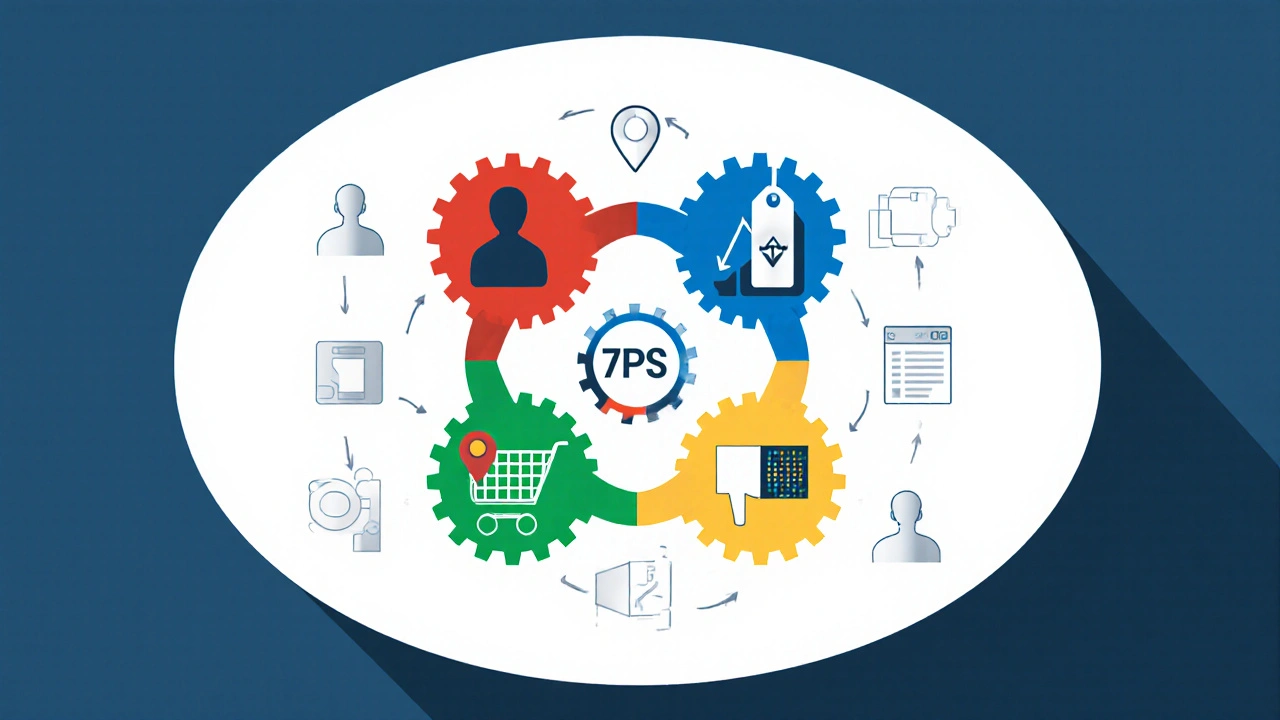11
The 4 Elements of a Winning Marketing Strategy Explained

4 Ps Marketing Strategy Checker
Check Your Marketing Strategy Alignment
Enter key details about your product, pricing, distribution, and promotion to see how well your strategy aligns with the 4 Ps framework.
When you hear the phrase Marketing Strategy is a systematic plan that defines how a business will reach its target market and achieve its revenue goals, you might picture a giant roadmap full of fancy tech. In reality, a solid strategy starts with just four basic building blocks. Master them, and you have a framework that works for startups, global brands, and everything in between.
Quick Takeaways
- The four core elements are Product, Price, Place, and Promotion - often called the 4Ps.
- Each P must align with your target audience, positioning, and overall business objectives.
- Modern marketers expand the mix to include People, Process, and Physical Evidence.
- Use a step‑by‑step checklist to turn theory into a usable plan.
- Avoid common pitfalls like treating the 4Ps as a static checklist rather than a dynamic system.
What Exactly Is a Marketing Strategy?
A Marketing Strategy provides a clear roadmap that connects market research, brand goals, and tactical execution. It answers three questions: Who are we selling to? What are we offering? How will we convince them? By answering these, you create a plan that guides budgeting, team structure, and performance measurement.
Product: The Core Offering
First up is Product the tangible good or intangible service that fulfills a customer need. This isn’t just about features; it’s about benefits, quality, and the problem you solve. For example, a coffee subscription service isn’t merely beans-it promises convenience, variety, and a daily ritual.

Price: Turning Value into Revenue
Next comes Price the amount a customer pays, reflecting perceived value, cost structure, and competitive positioning. Pricing tactics range from premium pricing that signals luxury to penetration pricing that aims for rapid market share. A SaaS company might use tiered pricing to serve both startups and enterprise clients.
Place: Getting Your Offer Where Customers Are
Place covers distribution channels, locations, and logistics that deliver the product to the buyer. In the digital age, place includes e‑commerce platforms, mobile apps, and even social‑media storefronts. A fashion brand may sell through its own website, third‑party retailers, and pop‑up shops to maximize reach.
Promotion: Communicating the Value
The final pillar is Promotion the mix of advertising, public relations, content, and sales tactics that raise awareness and drive action. Effective promotion blends storytelling with data‑driven targeting. Think of a fitness app that uses influencer videos, email drip campaigns, and retargeted ads to convert free users into paid subscribers.
| Element | Key Decision | Typical Metrics | Common Tools |
|---|---|---|---|
| Product | Features, quality, packaging | Customer satisfaction, NPS, return rate | Surveys, focus groups, CAD software |
| Price | Pricing model, discount structure | Average order value, price elasticity | Pricing calculators, A/B testing platforms |
| Place | Channel mix, geographic coverage | Channel sales share, fulfillment time | ERP, ecommerce platforms, GIS tools |
| Promotion | Message, media mix, budget allocation | CTR, CAC, ROAS | Ad managers, email platforms, analytics suites |
How the 4Ps Work Together
Think of the 4Ps as a team. A premium product (high‑quality design) justifies a higher price, which in turn shapes promotional messaging focused on exclusivity. The right place-luxury boutiques or a high‑end e‑commerce site-reinforces that perception. If any element is out of sync, the whole strategy stalls.

Beyond the Basics: Expanding the Mix
Modern marketers often add three more Ps: People, Process, and Physical Evidence. People refer to staff and customers who interact with the brand, making service quality a strategic lever. Process covers the flow of activities that deliver the product, such as order fulfillment speed. Physical Evidence includes tangible cues like packaging, website design, and store layout that confirm brand promises.
Building Your Own Strategy: A Step‑by‑Step Checklist
- Define Your Target Audience: Use demographic, psychographic, and behavioral data to create detailed buyer personas. Tools like Google Analytics and Facebook Insights can help.
- Conduct a SWOT Analysis to map strengths, weaknesses, opportunities, and threats related to your market.
- Set Clear Positioning: Decide how you want your brand to be perceived relative to competitors.
- Design the Product experience: Choose features, packaging, and service levels that match the positioning.
- Determine Price strategy: Select a pricing model (subscription, freemium, tiered) and run price‑sensitivity tests.
- Map Place channels: Decide between direct‑to‑consumer, retail, marketplace, or hybrid distribution.
- Plan Promotion tactics: Allocate budget across paid media, owned content, PR, and influencer collaborations.
- Align People, Process, and Physical Evidence to support the above decisions.
- Establish KPI dashboard: Track metrics for each P and adjust quarterly.
Common Pitfalls & Pro Tips
Pitfall 1: Treating the 4Ps as a one‑time checklist. The market changes, so revisit each element every 6‑12 months.
Pro Tip: Use a ‘quick‑test‑learn’ loop-run small pilots for price or promotion, measure results, and scale the winners.
Pitfall 2: Misaligning price with perceived value. If customers think they’re overpaying, promotion alone won’t fix it.
Pro Tip: Conduct value‑based pricing surveys to ensure your price reflects the benefits customers care about.
Pitfall 3: Ignoring channel cannibalization. Selling a product both online and in‑store can erode margins if not managed.
Pro Tip: Set distinct channel‑specific pricing or bundle offers to keep each channel profitable.
Frequently Asked Questions
What is the difference between the 4Ps and the marketing mix?
The terms are interchangeable. Both refer to Product, Price, Place, and Promotion as the core components of a marketing plan.
Can a business succeed with only one of the 4Ps well designed?
Rarely. A great product can fail if priced too high, sold in the wrong place, or promoted poorly. All four must work together for sustainable growth.
How often should I review each element of my marketing strategy?
At a minimum, conduct a full review annually. For fast‑moving industries, quarterly checks help you stay ahead of competitors and market shifts.
Is it still relevant to use the 4Ps in digital‑first businesses?
Absolutely. Even digital products need a clear offering (Product), pricing model (Price), distribution method (Place - e.g., app store, website), and messaging (Promotion). The framework adapts nicely to online contexts.
What tools can help me manage the 4Ps efficiently?
Project‑management software (Asana, Trello) for cross‑functional coordination, analytics platforms (Google Analytics, Mixpanel) for monitoring performance, and collaborative design tools (Figma, Adobe XD) for product development are common choices.
Understanding and applying the marketing strategy elements isn’t a magic trick-it’s a disciplined process. Align your product, price, place, and promotion with the people you want to serve, and you’ll have a roadmap that delivers results over the long haul.











